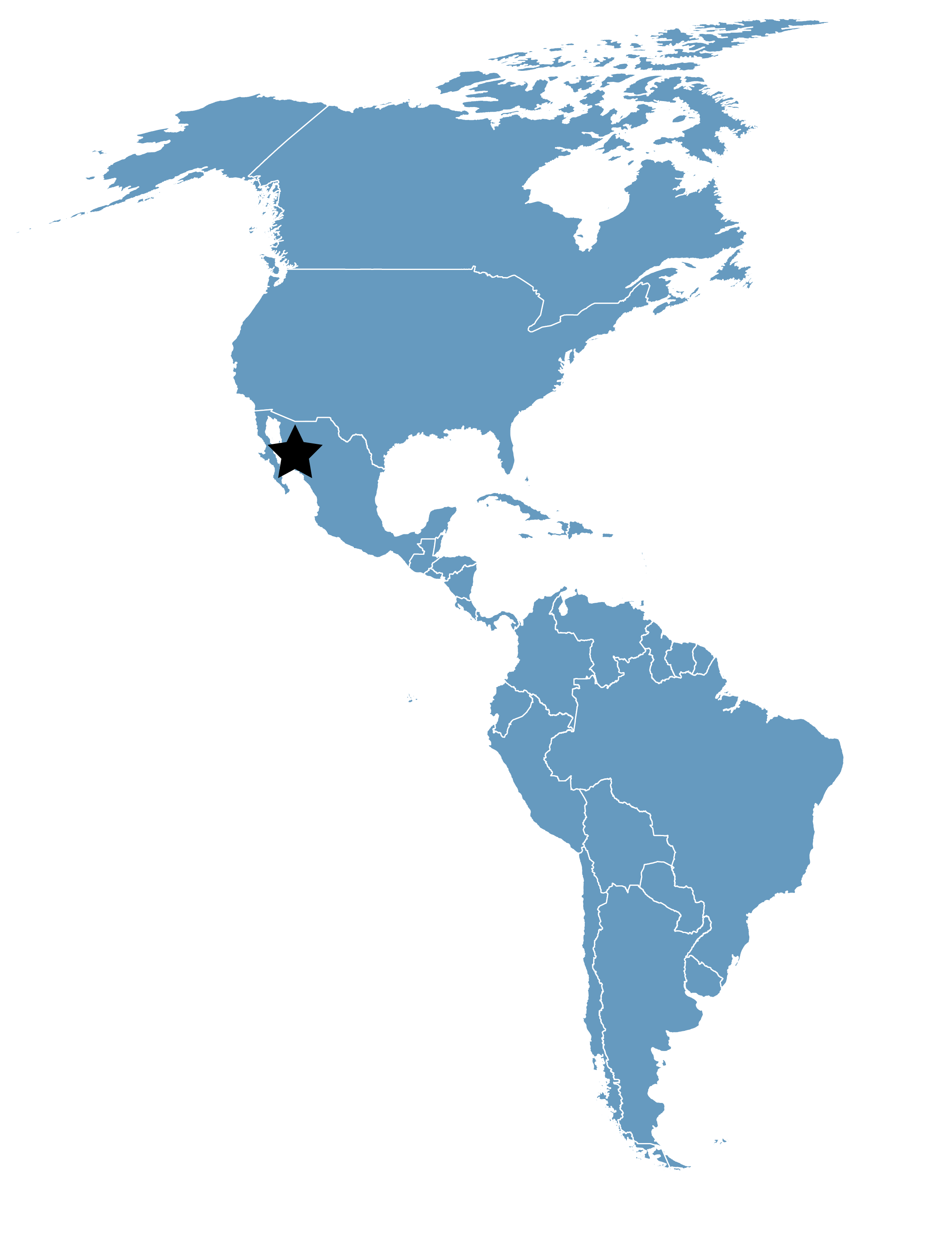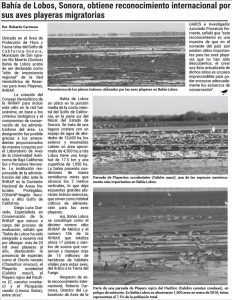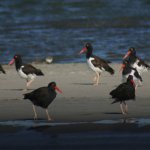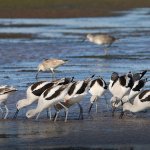Bahía de Lobos
Location
Sonora, Mexico
Category
Regional
Basis for Designation
More than 20,000 shorebirds per year, especially presence of Charadrius nivosus, Calidris mauri, Calidris canutus roselaari, and Limosa fedoa.
Size
27,516 hectares (67,994 acres)
Date Designated
October 2018
Site Partners
Universidad Autónoma de Baja California Sur (UABCS)
Pronatura Noroeste
Comisión Nacional de Áreas Naturales Protegidas (CONANP) – Región Noroeste y Alto Golfo de California
Centro de Investigaciones Biológicas del Noroeste (CIBNOR) – Unidad Sonora
Overview
Bahía de Lobos is a coastal lagoon located in the Islands of the Gulf of California-Sonora Flora and Fauna Protection Area, in the municipality of San Ignacio, in Río Muerto, Sonora. Bahía de Lobos was nominated as a WHSRN Site of Regional Importance, for supporting more than 20,000 shorebirds per year, especially for the presence of species such as Snowy Plover (Charadrius nivosus), Western Sandpiper (Calidris mauri), the roselaari subspecies of Red Knot (Calidris canutus roselaari), and Marbled Godwit (Limosa fedoa), among others.
Bahía de Lobos is in the middle of the eastern side of the Gulf of California, on the southern coast of the Mexican state of Sonora. The bay covers about 11,800 hectares (~29,158 acres), and estuaries and coves that span another 4,500 hectares (~11,120 acres). The lagoon is framed by Isla Lobos, a narrow, 17.5 kilometer (~11 mile) island of 1,950 hectares (~4,820 acres). Bahía de Lobos is a site of mixed semi-diurnal tides, meaning the bay drains and floods with two high tides and two low tides each day. Six to seven foot tides at Bahía Lobos expose large areas of mud and sandflats, creating critical foraging habitat for shorebirds.
Other Designations
Bahía de Lobos is also recognized by the following statuses: (1) Natural Protected Area (Flora and Fauna Protection Area – Islands of the Gulf of California, Sonora); (2) Priority Marine Region; (3) Priority Hydrological Region (SEMARNAT 2007); (4) Important Bird Conservation Area (Valdés 2000); (5) Ramsar Site (Ramsar 2008); (6) Priority Wetland for Shorebirds in Mexico (No. 10 SEMARNAT 2008); (7) Priority Wetland for Migratory Aquatic Birds in Mexico Carrera and de la Fuente 2003); (8) as part of the priority region of the Marine Ecological Management Program of the Gulf of California (DOF 2006).
Threats
- Overfishing: the human population surrounding the lagoon has caused greater pressure on the riparian fisheries.
- Changes to the surrounding environment: the coastal floodplain, emergent vegetation in the high coastline and highlands adjacent to the coastal zone have been altered, mainly by the development of shrimp farms (drying or filling of floodplains), irrigated agriculture in the areas around the wetland, and for the extraction of salt. These changes have a damaging and unquantified effect on the lagoon habitat.
- Pollution: Bahía de Lobos receives agricultural and urban wastewater through collector drain No. 2 in the Yaqui Valley (Castillo 2002), which could potentially cause eutrophication that has negative consequences for the environment, public health, and productive activities. There are also serious solid waste problems.
- Hunting: the area is a hunting zone for Brant and ducks.
Resources
Local news story (in Spanish) about the designation of Bahía Lobos as a WHSRN site.
The Bird Lab at the Autonomous University of Baja California Sur (UABCS) works for the conservation of birds in northeastern Mexico.










